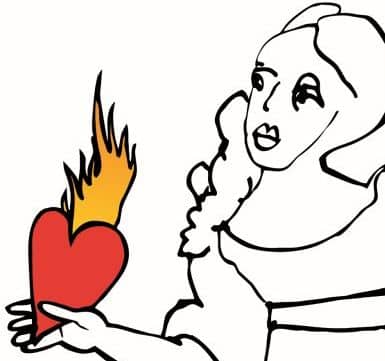7 October 2020
Are there basic emotions such as fear, anger, disgust, sadness, surprise and happiness that are rooted within us and occasionally emerge in a controlled or uncontrolled fashion? Are we subject to fixed programmes of affect that need to be civilised, as suggested by the hydraulic model of emotions? The cultural sciences tell us this is not the case; emotions are not biological processes but culturally formed impulses engendered by material practices. They are the product of a complex process of exchange between the body, the mind and a particular social group. In their practical, material and performative approaches, the cultural sciences take a route completely different to that of cognitive psychology. Based on a criticism of the Protestant research tradition, in which religion is viewed as a rather immaterial concept and ‘faith’ is placed at its very heart, historians, ethnologists and cultural scientists have developed approaches that view the emergence of religious emotions as the result of material practices.
For example, historians examine concrete emotional communities, such as families, neighbourhoods, monasteries and church congregations. Their focus is on the emotional connections between individuals and their affective expression and the way these connections are either expected or rejected in such communities. Another approach examines emotional experiences rooted in the act of speaking or writing and assumes a connection between emotional expression and emotional experience, such as in the act of praying or writing in one’s diary. In this respect, the naming of emotions can make this connection tangible and gives rise to an emotional state that is both physical and mental, thus creating realities of its own.
Ethnologists see the emergence of religious emotions as something that is rooted in the interaction with any conceivable form of media. This includes printed media, manuscripts, substances, smells, objects, images, words, sounds, texts and the body itself. Internal feelings are generated from outside. Media and the material practices associated with them are regarded as the vehicle of religious emotion. Ritual, communication, ceremony, instruction, meditation, propaganda, pilgrimages, magic and liturgy thus create specific religious systems of faith. Cultural anthropologist Monique Scheer has demonstrated a helpful approach in terms of both methodology and research practice. When studying emotions, she suggests an examination of four overlapping emotional practices: mobilisation, denotation, communication and regulation. Scheer describes the mobilisation of feelings as the habits and rituals that give rise to a particular emotional state. The denotation of feelings then makes this state explicit, and the exchange of feelings between individuals is accomplished by means of communication and media. These activities are invariably regulated by means of socialisation and rules of affect. Viewed from this perspective, emotions generally are not something that we have, but something that we do.
In the cultural sciences there are many approaches to researching historical emotions. We are not the first to examine religious emotions, but the HAB holdings gently beckon us towards such studies – an invitation that cannot be ignored. As a part of this research programme, we plan to develop academic activities such as workshops and research projects. Furthermore, our fellowship programme will enable researchers to take part in research stays focusing on the topic ‘Religion & Emotion’. We are particularly interested in working with comparative perspectives and integrating all the religions practised in premodern Europe, be it Judaism, Islam or Christian denominations, including those that came in the wake of Lutheranism. An examination of emotions can transform our view of religion, and a greater focus is placed on the faithful and not just on theology and politics.









